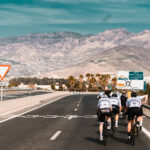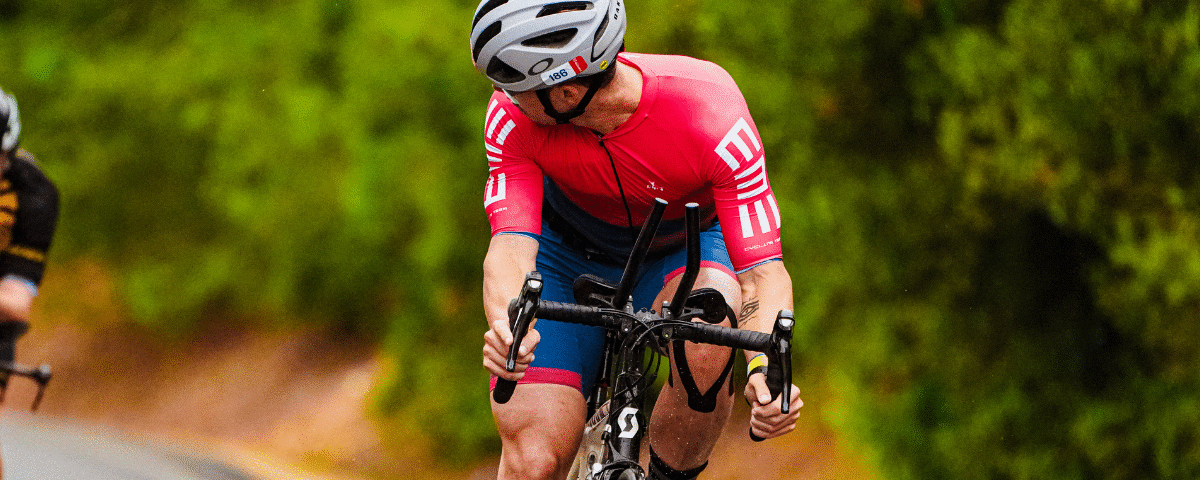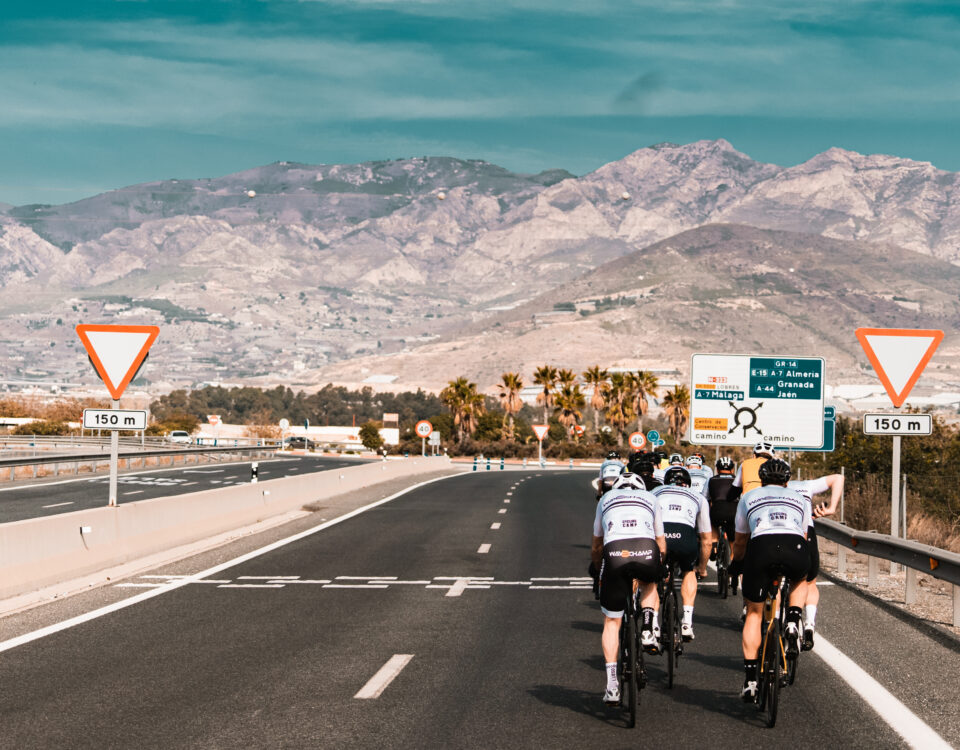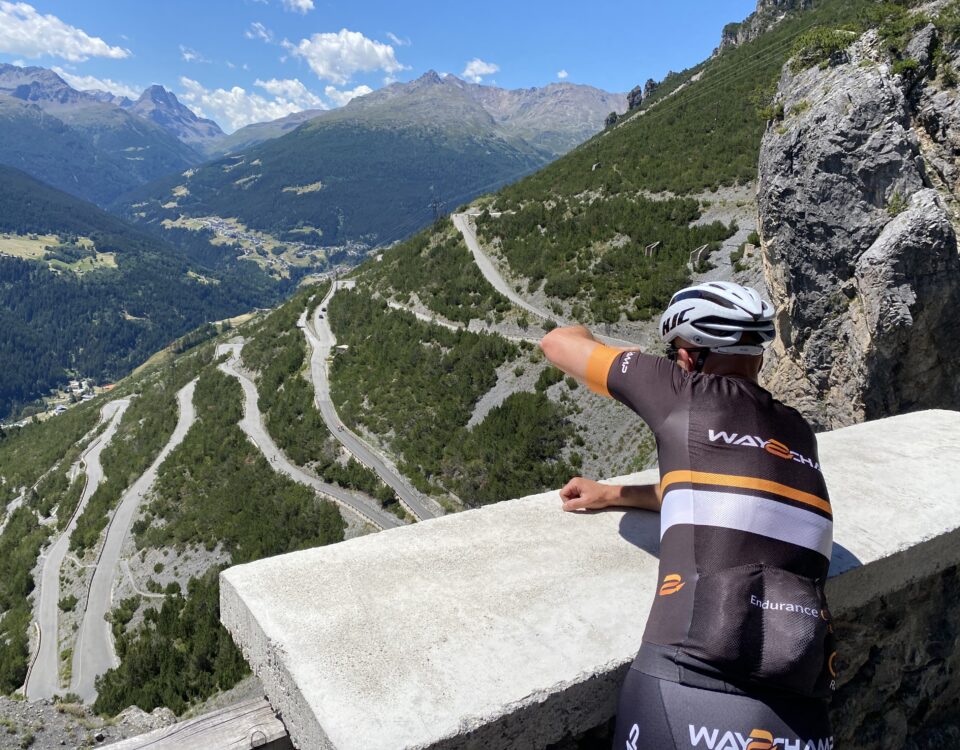
The 5 Energy Drains Every Entrepreneur Over 40 Must Eliminate
8 July 2025What Can you Do About Tiktur Proper Now
20 October 2025
In cycling, the question is increasingly being asked: is riding in the heat just a battle for survival, or can it be a deliberate training stimulus? More and more data suggests the latter. Heat training is becoming an effective tool not just for professionals, but also for ambitious amateurs looking to improve FTP without increasing training volume.
Adaptation to high temperatures produces effects similar to altitude training — it increases plasma volume, improves oxygen transport, and lowers heart rate at the same intensity. Importantly, these benefits are also observed in moderate conditions.
Even just a few days of exposure to high temperatures can bring:
- an FTP increase of 20–30 watts,
- a 4–6% improvement in VO2max,
- a 40–50% increase in time-to-exhaustion in hot conditions.
In the following sections, we’ll outline the latest research, protocols used by WorldTour teams, and adaptation strategies available to amateurs, even without a sauna or specialized equipment.
1. Hematological adaptation
Exposure to heat triggers a response in the body similar to altitude training: red blood cell production increases, enhancing oxygen transport capacity.
This process occurs in stages:
- Days 1–3: plasma volume increases, improving circulation and cooling ability.
- Days 4–7: erythropoiesis (red blood cell production) intensifies.
- Days 8–14: the body stabilizes at a new hematological level.
2. Thermoregulatory adaptation
Heat adaptations are not only about blood, they also involve how the body manages internal temperature.
With regular training in hot conditions:
- sweat glands activate earlier and more efficiently,
- sweat loses less sodium, reducing the risk of dehydration and cramping,
- skin blood flow increases, enhancing heat dissipation,
- heart rate drops by 5–8 bpm at the same power output.
Result: during races (even in moderate conditions), you can ride harder, longer, and with less fatigue.
3. Metabolic adaptation
Heat training also affects how the body sources energy. As adaptation progresses:
- fat utilization increases during effort,
- glycogen use drops by up to 50% at submaximal intensity,
- mitochondria function more efficiently, and oxidative stress is reduced.
These changes can translate into greater endurance and better performance, even outside hot conditions.
Theory of adaptation – how heat training rebuilds your body
Cellular adaptations: more energy, less damage
Training in high temperatures triggers a cascade of changes at the molecular level:
- Heat shock protein (HSP) expression increases by 200–300%. These proteins protect cells from damage, accelerate recovery, and stabilize protein structures.
- Mitochondriogenesis – the production of new mitochondria increases by 15–20%. Muscle cells become more efficient “power plants,” generating more energy (ATP) with lower oxygen cost and reduced oxidative stress.
Vascular adaptations: better cooling, better fuel delivery
As a result of heat exposure:
- Capillary density in the skin increases by 10–15%. Blood – along with oxygen and nutrients – circulates more efficiently, supporting both thermoregulation and recovery.
- Angiogenesis gene expression rises – after just 72 hours of heat training, elevated VEGF (vascular endothelial growth factor) activity is observed, stimulating the formation of new blood vessels.
Hormonal adaptations: conserving electrolytes and water
Heat training doesn’t just condition your muscles – it also trains your hormonal system:
- Aldosterone (a hormone that retains sodium) becomes more sensitive – the body holds on to electrolytes more efficiently, reducing the risk of dehydration and cramps.
- ADH (antidiuretic hormone) is activated earlier – kidneys restrict fluid loss more quickly, helping to prevent dehydration during prolonged efforts in the heat.
Metabolic and thermoregulatory adaptations: heat builds cold resilience
Paradoxically, adaptation to heat also improves cold tolerance. Mechanisms related to thermogenesis, especially activation of brown adipose tissue (BAT), become more efficient – helping the body regulate temperature in both directions.
At the same time:
- Glucose metabolism improves – cells use available carbohydrates more effectively, lowering the risk of “bonking” (hypoglycemia) during long races.
- Metabolic flexibility increases – the body switches more quickly between fat and carbohydrate utilization depending on exercise intensity.
Why does heat training work?
Heat adaptation and performance improvement
Training in high temperatures is not just preparation for hot conditions – it’s an effective form of physiological adaptation that enhances key mechanisms influencing endurance, regardless of weather. When properly implemented, heat training improves the body’s efficiency during effort.
The human body acts like a cooling system – without adaptation, it overheats quickly, limiting intensity. Heat training is a kind of “upgrade,” allowing you to maintain a high workload longer, even in moderate climates.
What changes with heat training?
- More plasma and red blood cells: improves oxygen transport and allows you to produce more power at the same effort.
- Better cooling capacity: sweating begins earlier, sweat contains less sodium – lowering the risk of dehydration and cramps.
- Lower heart rate at the same intensity: resting and exercise heart rate decrease – you save energy and fatigue more slowly.
- Increased fat utilization as a fuel source: the body burns fat more efficiently, sparing glycogen and improving endurance during long sessions.
What does the science say about heat training?
Recent years have brought a wave of significant discoveries in the field of heat adaptation. A series of studies confirmed not only the effectiveness of heat training but also its practical application as an alternative to altitude training.
Research by Prof. Carsten Lundby
In a study conducted by Prof. Carsten Lundby’s team (University of Zurich), 47 elite male and female athletes participated. The results? Both men and women achieved nearly identical increases in hemoglobin mass – 4% and 3.5%, respectively.
This shows that heat training is equally effective regardless of sex – and its potential is not reserved for a chosen few.
Research by Prof. Bertil Rønnestad
In a groundbreaking 2025 study, Prof. Bertil Rønnestad (Norway) demonstrated that heat training sessions can not only replace but also preserve the adaptations achieved during altitude camps.
After three weeks spent at altitude, some athletes performed three additional heat sessions per week.
Results:
- The heat training group maintained increased hemoglobin mass for more than three weeks.
- The control group returned to baseline levels within two weeks.
Meta-analysis by Dr. Nathaniel Brown
The most comprehensive review of heat adaptation research was published in 2024. A research team led by Dr. Nathaniel Brown analyzed data from dozens of scientific studies involving hundreds of endurance athletes.
Average benefits of heat training:
- aerobic performance improvement: +23%
- VO2max increase: +6%
- movement economy improvement: +2.5%
- lowered lactate threshold: –1.0 mmol/L
Importantly, key physiological changes begin after just 5–7 days of adaptation. Full effects can be achieved in 10–14 days, making heat training one of the fastest ways to boost overall endurance.
How do professional cyclists train in the heat?
Tadej Pogačar
Despite his young age, Tadej Pogačar has already won the Tour de France twice, and his preparation is a textbook example of combining modern technology with classical physiology. Since 2024, his team (led by coach Javier Solà) has implemented an advanced body temperature monitoring system using CORE sensors.
Real-time temperature measurement allows the team to precisely control training loads during heat sessions, avoiding overheating while maximizing adaptation.
“Today we know much more about individual responses to heat,” says Solà. “We can manage fatigue better and better understand the adaptive window.”
Pogačar also benefits from the expertise of Alexandre Baccili, a thermoregulation specialist who previously worked with Formula 1 drivers and elite tennis players. This collaboration enables highly precise acclimatization protocols, both during base training and competition phases, where thermal adaptation can determine the winning edge.
Chris Froome
For Chris Froome, preparation for the Grand Tours wasn’t limited to climbing and intervals, a key component was a makeshift sauna in his garden shed. Before the 2011 Vuelta, which ended with his breakthrough second place, Froome spent hours training on a turbo trainer inside an overheated room.
Coach Tim Kerrison, the mastermind behind Team Sky’s success, quickly realized that British riders needed to learn how to perform in conditions they rarely encountered at home, high temperatures and altitude. That’s why training camps in Tenerife were no coincidence, they combined heat, altitude, and long climbs into one package.
An interesting element was the combination of heat training with a low-carbohydrate diet. Under Kerrison’s guidance, Froome often trained in a glycogen-depleted state, teaching his body to rely on fat as the main energy source. This was critical during races in hot climates, where carbohydrate digestion can be impaired.
Example heat training protocol for cyclists
Basic stage: hot baths
For: amateur cyclists, recreational riders, or those with limited access to equipment
Goal: gentle adaptation to heat stress without altering the regular training plan
Schedule:
- Days 1–3: hot bath at 40°C for 20–25 minutes post-workout
- Days 4–7: increase session duration to 30–35 minutes
- Days 8–14: full adaptation, 40–45 minutes
How to do it:
- Fill a tub with water at 40–42°C, use a kitchen thermometer
- Submerge the body up to the neck and breathe calmly – avoid reading or screens
- Monitor heart rate – it should rise into zone 2, even at rest
- Drink 0.5–0.75 L of electrolytes during the bath
- Exit slowly after the session, do not use cold showers afterward
Effects:
- Effectiveness: up to 85% comparable to active heat training
- Adaptation period: 10–14 days
Intermediate stage: active heat training
For: experienced cyclists, FTP > 250W, training consistently
Goal: combine thermal stimulus with low/moderate aerobic training
Training conditions:
- Room temperature: 25–30°C (heater or infrared sauna)
- No fan
- Winter clothing: long-sleeve jersey, hat, gloves, thermal bibs
- Indoor trainer
- Core body temperature sensor (e.g. CORE Body Temp)
Training progression:
- Days 1–5: 60 minutes in zone 1–2, target core temp ~38.5°C
- Days 6–10: 75 minutes, include sweet spot intervals
- Days 11–14: 90 minutes, possible return to full intensity
Monitoring:
- CORE sensor: real-time body temperature tracking
- Heart rate may rise by 10–20 bpm – this is normal
- Body mass loss >2% = excessive dehydration, shorten session if needed
Effects:
- Minimum recommended duration: 10 days
- Increased plasma and hemoglobin volume
- Improved VO₂max and heat tolerance
Advanced stage: heat chamber simulation
For: amateurs with access to specialized facilities or a homemade “training sauna”
Simulation conditions:
- Temperature: 37–38°C
- Humidity: approx. 65%
- Session duration: 50 minutes
- Frequency: 5x per week for 3–5 weeks
Home version:
- Small bathroom with hot shower running
- Space heater to maintain high ambient temperature
- Train in full winter gear
- Sessions of 45–60 minutes at low intensity
Heat training – comparison of available options
Comparison for amateurs
| Method | Effectiveness | Availability | Safety | Practicality |
| Hot baths (40°C) | ~5% increase in performance in 6 days | 95% (home bathroom) | High | Very high |
| Sauna after training | ~32% endurance improvement (3 weeks) | 30–60% (depends on location) | Medium | Moderate |
| Active training in heat | ~5–8% improvement after 10 days | 90% (trainer + heating setup) | Medium | Exhausting, requires discipline |
Recommendations for cyclists who want to try heat training
For beginner cyclists (FTP < 220W)
Your heat training journey starts with simple, safe steps. You don’t need any special equipment—just a bathtub and consistency.
Action plan:
- Week 1: 6 baths, 20 minutes each, in 38°C water
- Week 2: 6 baths, 30 minutes each, in 40°C water
- Maintenance: 2–3 baths per week throughout the season
Expected benefits:
- FTP increase of 8–15 watts
- Improved heat tolerance by 20–30%
- Less fatigue during longer summer rides
For intermediate cyclists (FTP 220–280W)
You already have the foundation, now it’s time for efficient tools. By combining passive and active heat adaptation, you can achieve noticeable gains in form.
Assumptions:
- 3–4 hot baths per week
- 2 active heat training sessions on the trainer
- 1 sauna session after a hard workout (if available)
Action plan:
- Week 1: adaptation (lower temperatures, shorter sessions)
- Week 2: intensification (full sessions, higher temps)
- Week 3: consolidation (maintain adaptation, avoid overload)
Expected benefits:
- FTP increase of 15–25 watts (6–8%)
- Heat performance improvement by 30–40%
- Better riding economy even in cooler conditions
For advanced cyclists (FTP > 280W)
You train with intention. You’re chasing watts that truly make a difference. For you, heat training is a performance tool, treat it like a dedicated block of periodization.
Assumptions:
- 5-week block: 5 sessions per week, 50 minutes each
- Use of CORE sensor for precise core temperature tracking
- Sessions integrated into your regular plan (replace Z1 rides or recovery spins)
Action plan:
- Heat periodization: 4–6 weeks before key event
- Combination with altitude training: dual hematological stimulus
- Protocol customization: tailor session length and heat load to individual physiology
Expected benefits:
- FTP increase of 20–35 watts (6–10%)
- Sustaining 90% of power output in heat (instead of the typical 70–75%)
- Improved metabolic flexibility and stable form across the season
Summary – what is heat training?
Heat training is an effective way to improve fitness. It works similarly to altitude training but is easier to implement. It increases plasma volume, improves oxygen transport, lowers heart rate, and teaches the body to handle exertion more efficiently—not only in hot conditions.
Benefits can be achieved in just a couple of weeks. No specialist equipment is needed—hot baths or training in a warmer room are enough.
Heat training works for everyone: beginners, intermediate cyclists, and professionals. Depending on your level, it can be adjusted to fit your capabilities.
Thinking about cycling training? If you want to take your riding to the next level, we have a great option for you:
- Individual coaching – work one-on-one with an experienced coach who will continuously adjust your training load to your needs and support your development as a cyclist.
Bibliography
- Lundby, C., Hamarsland, H., Hansen, J., Bjørndal, H., Berge, S.N., Hammarström, D., Rønnestad, B.R. (2023). “Sex-specific responses to heat acclimation in elite endurance athletes.” Journal of Applied Physiology, 134(4), 892-904.
- Rønnestad, B.R., Odden, I., Urianstad, T., Hansen, J., Mølmen, K.S., Cardinale, D.A. (2025). “Heat training maintains hemoglobin mass adaptations following altitude training in elite cyclists.” Medicine & Science in Sports & Exercise, 57(2), 245-253.
- Brown, H.A., Topham, T.H., Clark, B., Ioannou, L.G., Flouris, A.D., et al. (2024). “Quantifying heat acclimation adaptations: A systematic review and meta-analysis of endurance athletes.” Sports Medicine, 54(8), 1823-1845.
- Rønnestad, B.R., Hansen, J., Mølmen, K.S. (2022). “Heat training efficiently increases hemoglobin mass in elite cyclists.” Scandinavian Journal of Medicine & Science in Sports, 32(6), 1041-1051.

